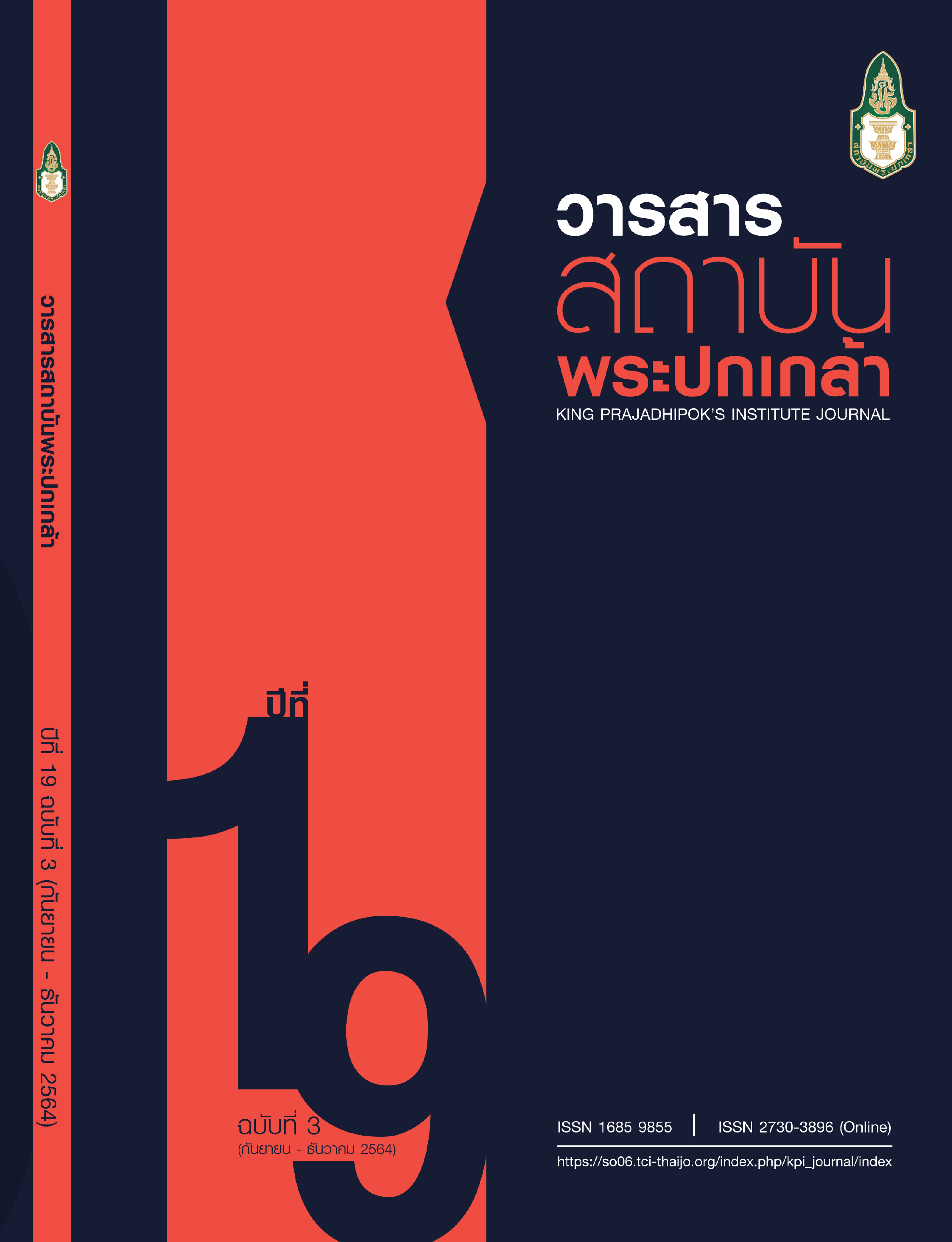Principles of freedom of public assembly in the Thai context
Main Article Content
Abstract
Freedom of Public Assembly in Thailand There are three levels of applicable law: international law, constitutional law, and public assembly law. In terms of international law, including The International Covenant on Civil and Political Rights (ICCPR), which Thailand is a party to and is bound by on 27 October 1996, has come into force on 30 January 1997. Consistent with the 2017 Thai Constitution, Article 44, first paragraph. Indicate that Freedom of assembly will be guaranteed. If it is a peaceful and unarmed assembly the objectives of this article were to study 1) the development of public assembly in Thailand and 2) analyze the principle of freedom of public assembly in the Thai context. Under the context of the Constitution B.E. 2560 and the Public Assembly Act B.E. 2558, this article focuses on the study of documents. And the verdict concerning public gatherings found that the term “peaceful and unarmed assembly” was a demonstration aimed at expressing the power of pure calling. It is an expression of power that begins with the inner desires of the mind. It is not the power expressed by any weapon, and the term "unarmed" is that the assembly aims to use the power of firm will to demand its will instead of using weapons or mobilizing the masses for damage. Therefore, the criterion to be used to determine whether each rally in Thailand will be a peaceful and unarmed rally or not. Should we consider whether the assembly is going to affect the rights of the public or not? If there is an impact on the rights of the public it is not considered a peaceful or unconstitutional assembly.
Article Details

This work is licensed under a Creative Commons Attribution-NonCommercial-NoDerivatives 4.0 International License.
@ 2020 King Prajadhipok's Institute The Government Complex Commemorating All Right Reserved.
References
เรียบร้อยของบ้านเมือง. วารสารจุลนิติ ก.ค.-ส.ค. 2552, 3-26.
คำพิพากษาศาลฎีกาที่ 4946/2555. (2563). สืบค้นจาก
https://deka.in.th/view-525525.html.
คำพิพากษาศาลปกครองสูงสุด คดีหมายเลขแดงที่ อ.711/2555. สืบค้นจาก
http://www.admincourt.go.th/admincourt/site/05SearchSuit.html.
คำวินิจฉัยศาลรัฐธรรมนูญ คำสั่งที่ 59/2556. (2563). สืบค้นจาก
https://www.krisdika.go.th/th/diagnosis-sentence.
คำพิพากษาศาลแพ่ง คดีหมายเลขดำที่ 275/2557. (2563). สืบค้นจาก
https://www.krisdika.go.th/th/diagnosis-sentence.
คำพิพากษาศาลปกครองสูงสุด คดีหมายเลขแดงที่ อ.1442/2560. สืบค้นจาก
http://www.admincourt.go.th/admincourt/site/05SearchSuit.html.
คำสั่งศาลปกครองสูงสุด ที่ คร.33/2561. (2563). สืบค้นจาก
http://www.admincourt.go.th/admincourt/site/05SearchSuit.html
ชลัท ประเทืองรัตนา. (2559). กฎหมายการชุมนุมสาธารณะ : ดุลยภาพระหว่างเสรีภาพของผู้ชุมนุม
กับเสรีภาพของประชาชน. วารสารนิติศาสตร์ มหาวิทยาลัยนเรศวร ปีที่ 9 ฉบับที่ 1
มกราคม-มิถุนายน พ.ศ.2559.
พระราชบัญญัติการชุมนุมสาธารณะ พ.ศ.2558. (2563). สืบค้นจาก
http://web.krisdika.go.th/data/law/law2/%A1152/%A1152-20-2558-a0001.htm.
พงษ์พิลัย วรรณราช. (2563). สิทธิและเสรีภาพ แท้จริงแล้วเหมือนหรือแตกต่างกันอย่างไร.
สืบค้นจาก https://www.krisdika.go.th/data/activity/act83.htm.
วินิจ ผาเจริญ และ สุรพล พรมกุล. (2563). สิทธิและเสรีภาพในการชุมนุมสาธารณะตาม
พระราชบัญญัติการชุมนุมสาธารณะ พ.ศ.2558. วารสารวิชาการ มจร.บุรีรัมย์ ปีที่ 8 ฉบับ
ที่ 1 (2563) : มกราคม-มิถุนายน.
หยุด แสงอุทัย. (2535). ความรู้เบี้องต้นเกี่ยวกับกฎหมายทั่วไป. กรุงเทพมหานคร: สำนักพิมพ์
ประกายพรึก.
iLaw. (2563). กฎหมายไทยที่ใช้จำกัดเสรีภาพและการแสดงออก. สืบค้นจาก
https://freedom.ilaw.or.th/freedom-of-expression-101/limit-expression.


